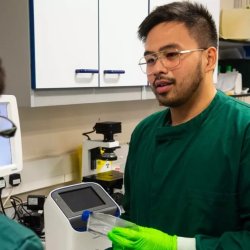
Dr Isaiah J. Ting BSc,PhD
Postgraduate Researcher
BSc, PhD
About
My research project
Co-expression of Ultradian and Circadian rhythms Investigation of co-expression of ultradian and circadian rhythms in biological data is vital to add knowledge to the behaviours of these rhythms. Using both in vitro (cell culture) and in silico (signal processing, MATLAB) methods, this project aims to expose ultradian rhythms and enhance its detection within in vitro models as well as pre-existing biological data.
Supervisors
Investigation of co-expression of ultradian and circadian rhythms in biological data is vital to add knowledge to the behaviours of these rhythms. Using both in vitro (cell culture) and in silico (signal processing, MATLAB) methods, this project aims to expose ultradian rhythms and enhance its detection within in vitro models as well as pre-existing biological data.
ResearchResearch interests
1. Co-expression of biological rhythms (ultradian and circadian).
2. Unmasking biological co-expression of stated rhythms.
3. Relationship between metabolism and biological rhythm, specifically with ultradian rhythms.
4. Biomedical signal processing.
Research interests
1. Co-expression of biological rhythms (ultradian and circadian).
2. Unmasking biological co-expression of stated rhythms.
3. Relationship between metabolism and biological rhythm, specifically with ultradian rhythms.
4. Biomedical signal processing.